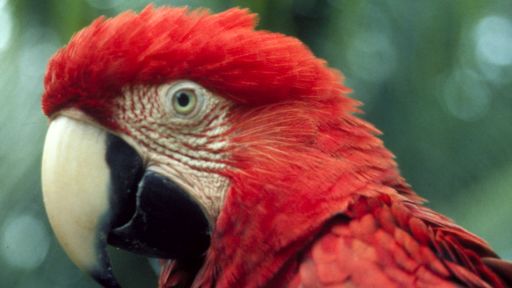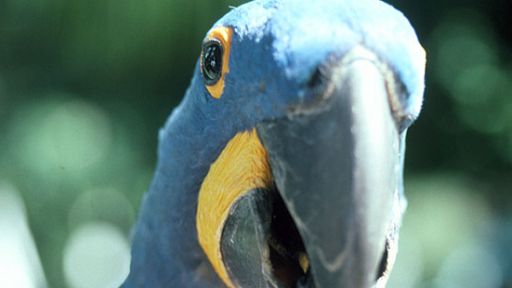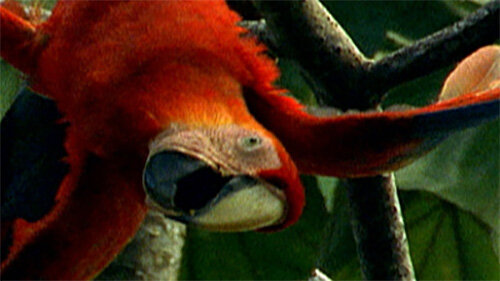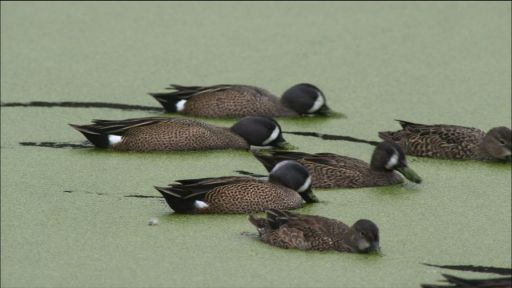Some are big, some are small. They wear feathered coats of amazing colors, or drab plumage that wouldn’t turn a head. Some are loud and raucous, others remarkably mellow. They are the world’s macaws — long tailed parrots that are both greatly beloved — and terribly endangered. And, for the most part, poorly understood.
Macaws are the world’s largest parrots. There are 17 different kinds, ranging in size from the magnificent cobalt-blue hyacinth, which can weigh in at 3 pounds, to the petite Hahns, which might weigh just a tenth as much. Whatever their size, however, macaws are marked by long, graceful tails that can be longer than their bodies. And, in general, larger macaws are more brightly colored than their smaller cousins.
Macaws can be found throughout Central and South America, from wet tropical rainforests to dry scrub lands. But many species prefer to be near rivers or streams; indeed, some of the most famous macaw-watching spots are muddy banks, where macaws apparently gather to harvest minerals and salt from the soil.
For heftier meals, macaws tackle everything from fruit and nectar to seeds and nuts. Often, they will forage over vast distances to find trees flush with ripe pickings. And they can be choosy about nesting sites, taking time to find just the right cavity in a tree or bank.
Scientists, however, know remarkably little about macaw family life. Some believe they mate for life, and produce just a few young a year. Some may live for 60 years or more.
Increasingly, however, they aren’t getting the chance. Habitat loss and hunting are taking a terrible toll. While a few of the 17 macaw species are still abundant, more than half a dozen are considered critically threatened or endangered. There are believed to be less than 3,000 hyacinth macaws in the wild, for instance, and less than 1,000 red-fronted and blue-throated macaws. Just a single Spix’s macaw may still be in the wild. The glaucus macaw is probably already extinct.
Conservationists are racing the clock to prevent that fate from overtaking other macaws. They are monitoring populations and weighing chicks — often working high in dangerous treetops. Others are recording habits and behavior, looking for clues to designing better protection strategies or reserves. Its often exacting, but necessary, work. “Unless we understand their wild biology,” says macaw expert Charles Munn, who is featured in NATURE’s The Real Macaw “we may not be able to avoid the extinction of species after species of these spectacular New World parrots.”






